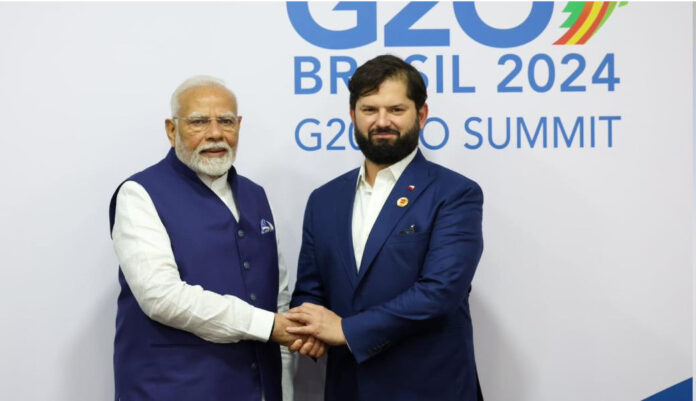It is said that while India was trying to get on its feet, China had already walked a hundred miles. One after another country in Latin America, the Land of White Gold (Lithium) awarded China with huge Lithium and Copper mining contracts. Both are the basic metals needed for IT infratructure, computer hardware, and batteries for electric vehicles (EVs).
After all that grandstanding talks of renewable energy, solar alliance and stuff, the fact remains India remains far behind in terms securing a self-reliance in energy security vis-a-vis China. Instead, we still import batteries for EVs and electronics and will remain dependent on China in the foreseeable future, if Indian government and businesses does not put their act together.
Without batteries nothing moves in IT, computers and transportation. And without good batteries and Lithium powered batteries we can not declare “energy independence.” China was not only there much before us, but it also sealed long term supply deals with Latin American countries, foreclosing a range of opportunities which we would have had, had our bureaucrats and policy makers understood the need to act on time.
Hype often hides the facts. Much was made of when in January 2024, India secured exploration and production rights to lithium blocks in Argentina, marking its first overseas lithium mining deal aimed at reducing dependency on China for this critical metal. But this hides that fact that China began formulating its global resource acquisition strategy as early as 2008 and Chinese firms started exploring deals in Latin America. Initial agreements laid the groundwork for deeper penetration in the mining sector.
From 2011 to 2015 China signed several agreements for lithium extraction in Argentina and Chile. These deals gave Chinese companies access to significant lithium reserves essential for batteries. Investment in mining projects across copper-rich regions in Peru and Chile ramped up, with billions of dollars in capital flowing into these sectors.
From 2016 to 2018 Chinese state-owned enterprises and private firms concluded several high-value contracts, collectively worth several billions of dollars, for copper and lithium mining. During this period, while India’s firms began expressing interest, they were largely outpaced by the scale, speed, and comprehensive nature of China’s deals.
From 2019 to 2020 China further consolidated its position by finalizing long-term supply contracts and investing in downstream processing capacities in Latin America. Indian companies, still grappling with domestic challenges and slower mobilization of capital, missed several key opportunities.
From then after, Latin American governments have increasingly welcomed Chinese investments due to the economic packages and infrastructure support that often accompanied mining deals. Although there have been occasional exploratory moves by Indian firms, they have not matched China’s scale or strategic impact.
China’s proactive, state-backed model enabled it to secure major mining concessions in Latin America by coupling resource access with broader economic incentives. India, facing internal hurdles and a more cautious foreign investment posture, has been unable to match this aggressive approach. The result is that China now dominates key sectors such as lithium and copper mining in the region, leaving India on the sidelines.
There are several key factors behind China’s advantage over India. There always have been very proactive State support financing. China’s government and state-owned enterprises actively provided massive financing and favorable trade deals. Their ability to offer infrastructure investment and loans created strong incentives for Latin American governments to partner with Beijing.
Beijing also deployed a robust diplomatic strategy, often bundling resource deals with broader economic packages (such as through the Belt and Road Initiative) that enhanced political ties with countries in the region.
With long-term strategy, Chinese companies secured long-term concessions in strategic sectors like lithium and copper. This “resource grab” approach ensured steady supplies for China’s booming industries, particularly in battery manufacturing and electronics.
In contrast, India’s efforts have been hampered by slower diplomatic engagement, more cautious overseas investment policies, and internal regulatory complexities. Indian firms and government agencies were less aggressive in pursuing large-scale mining agreements abroad.
Arrival Chile’s president Gabriel Boric Font proffers yet another opportunity to start proactive working on more variegated diplomatic and economic relationship with focus on essential resources. It is never too late.



